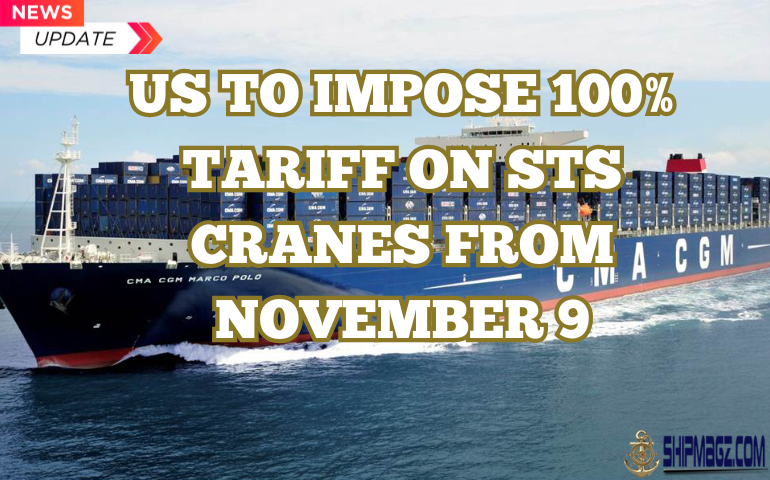US to impose 100% tariff on STS cranes from November 9
Publish Date:

The United States plans to enforce a 100% tariff on Chinese-manufactured ship-to-shore (STS) cranes and intermodal chassis starting November 9, 2025.
Additional duties as high as 150% are proposed on yard gantry cranes and mobile equipment.
This move is part of a broader trade action targeting Chinese imports in cargo handling equipment.
Industry stakeholders warn of potential cost increases and supply chain disruptions.
The policy has implications for ports, crane manufacturers, and logistics firms across global markets.
Additional duties as high as 150% are proposed on yard gantry cranes and mobile equipment.
This move is part of a broader trade action targeting Chinese imports in cargo handling equipment.
Industry stakeholders warn of potential cost increases and supply chain disruptions.
The policy has implications for ports, crane manufacturers, and logistics firms across global markets.
Background & Context
- The US government has determined that Chinese imports of certain cargo handling equipment (notably STS cranes and chassis) are subject to unfair trade practices or dumping, and thus deserving of high import duties.
- The announcement is made under the authority of the United States Trade Representative (USTR).
What the Tariffs Are
- From November 9, 2025, Chinese-made STS cranes and intermodal chassis will face a 100% tariff.
- Moreover, the government is proposing even higher duties—up to 150%—on yard gantry cranes and mobile equipment used in container terminals or ports.
Who Is Affected
- Chinese crane and port equipment manufacturers will be directly impacted.
- Ports and terminals that rely on importing such machinery will face higher capital costs.
- Logistics and cargo handling firms may see knock-on effects: increased costs, delays, or re-evaluation of supply chains.
- Competitors from non-Chinese manufacturers may gain market advantage in the US.
Implications & Risks
- Cost escalation: Ports may need to absorb higher import duty, possibly passing costs onto shipping lines or clients.
- Supply chain disruption: Projects already contracted using Chinese equipment may see renegotiations or cancellations.
- Market shifts: Manufacturers in other countries might win new contracts where Chinese firms lose competitiveness.
- Retaliation or trade tensions: China may respond with its own trade measures, escalating tensions in global trade.
Timeline & Enforcement
- The effective date is November 9, 2025, meaning importers must comply with new tariff rates from that date onward.
- Proposals for the higher 150% duties are “proposed,” meaning they might undergo review or adjustment before final imposition.










